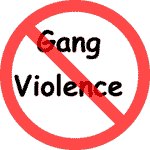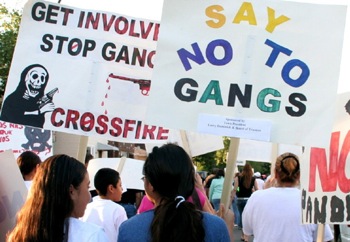
Communities with emerging or existing gang problems must plan, develop, and implement comprehensive, harm-specific responses that include a broad range of community-based components.
No universal strategy works to address all gang problems. The complexity of today's gangs suggests the need for a comprehensive, multifaceted effort that targets the reasons youth join gangs. Such an effort may involve three programmatic approaches:
- Develop strategies to discourage gang membership.
- Provide avenues for youth to drop out of gangs.
- Empower communities to solve problems associated with gangs through collaboration with law enforcement, parents, schools, youth, businesses, religious and social service organizations, local government officials, and other community groups in a comprehensive, systematic approach.
Form a Coalition
Coalitions are dynamic, single-focused learning and task groups that evolve from the common purposes and needs of diverse organizations and individuals. Through commitment, compromise, and careful planning, they may often be capable of effecting great change in their member organizations and in the communities they serve.
It is essential to involve the formal leaders--elected officials, appointed leaders, agency heads, and ministers--as well as the informal leaders--people who influence others by their words and actions. Communities should actively involve all community components that have a potential interest in responding to gang problems.
When it is effective, strategic planning promotes team building, a sense of ownership, enthusiasm, and an environment that maximizes a coalition's chances for success. It is the process by which an organization's guiding members envision the organization's future and develop the procedures and operations necessary to achieve that future.
Strategic planning can help law enforcement, community-based social services agencies, schools, citizens' groups, and other interested community components establish a common mission and common priorities and minimize parochial perspectives in favor of broader goals. The most effective community efforts use successive levels of networking--cooperation, coordination, and collaboration--to achieve the desired goals and objectives.
With commitment from all participating organization heads, a strategic planning team should be created that includes representatives of all participating organizations, such as law enforcement, schools, parks and recreation departments, religious organizations, elected officials, and citizens' groups. Additional members of the strategic planning team may include key interested individuals, such as youth who may have valuable information about potential obstacles and ways to overcome them.
The coalition's mission statement is the starting point for the strategic plan, from which all other strategic elements flow. The mission statement should include a statement of philosophy (values and beliefs) as well as a purpose on which all members agree.
What Are the Problems?

An important question facing the strategic planning team is whether the coalition has the ability to accomplish its mission--to intervene effectively in the community's gang-related problems by developing and implementing a comprehensive, harm-specific response. The organizational assessment should involve obtaining information on critical issues and ranking the coalition's strengths, weaknesses, future opportunities, and threats. After the strategic objectives have been established (with defined target dates) and tested against the critical issues and the strengths, weaknesses, opportunities, and threats, the planning team should identify ways in which the coalition might achieve these objectives.
Create an Action Plan
Action plans for a harm-specific response to local gangs will vary according to the nature of a community's problems, needs, targeted audiences, and finally, the identified strategic objectives. A coalition may select action plans that include particular methods for identifying current and potential gang members, facilitating conflict resolution among gangs, or working toward graffiti abatement.
Act!
At its implementation phase, the strategic plan is delivered to participating organization heads. It then becomes important for the organization heads to become visibly involved in the plan's implementation, publicly committing to it and demonstrating this commitment by dedicating the necessary resources and designating the appropriate personnel to ensure its success. A well-designed and well-executed communication strategy, targeting both participating organizations and the community at large, can help ensure successful strategic plan implementation.
Evaluate Your Results
The evaluation step in program development and implementation should not be overlooked. Program planners need to know how well the overall plan is working and how to improve it. The strategic planning team should conduct evaluations of the strategic plan during implementation and make any necessary changes to ensure the objectives are being met and the coalition's mission is being accomplished.
 Print
Print Email
Email







